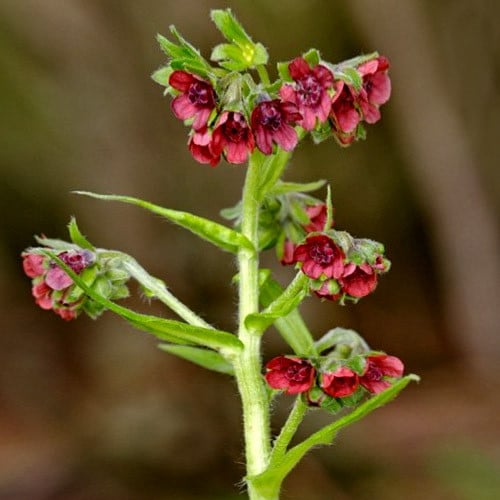
Dharaseeds
Cynoglossum Dioscoridis Seeds
Estimated Free Delivery between April 16 and April 19.
Secured Payment Methods
Your transaction is protected with advanced security measures to keep your information confidential
The Cynoglossum Dioscoridis Seeds produce striking wildflowers that bring a touch of natural elegance to any garden. Known for their vibrant blue-purple blooms and delicate texture, these plants thrive in both naturalized and cultivated settings. Perfect for flower beds, borders, or wildflower meadows, this species is an excellent choice for gardeners looking to add a unique and eye-catching element to their garden.
Key Benefits
- Vivid Blue-Purple Blooms: Features distinctive, richly colored flowers that captivate the eye.
- Hardy and Resilient: Adaptable to various climates and soil types, making it suitable for a range of gardening environments.
- Pollinator-Friendly: Attracts bees, butterflies, and other beneficial pollinators.
- Low Maintenance: Requires minimal care, ideal for gardeners of all experience levels.
- Naturalizing: Easily self-seeds, creating a perennial display over time.
Variety Features
- Plant Characteristics: Upright growth habit with clusters of small, five-petaled blue-purple flowers atop slender stems.
- Bloom Season: Late spring to early summer, providing long-lasting color.
- Growth Habit: Forms dense clusters that spread naturally, adding a wildflower meadow vibe.
- Size: Grows to a height of 12–24 inches, suitable for borders, meadows, and container planting.
Planting Instructions
Planting Season
- Sow seeds in early spring or fall for best results.
- Prefers cool weather for germination and establishment.
Planting Details
- Seed Depth: Sow seeds 1/8 inch deep and lightly cover with soil.
- Spacing: Space seeds 8–12 inches apart.
- Soil Requirements: Thrives in well-drained, moderately fertile soil with a pH of 6.0–7.5.
- Sunlight: Grows best in full sun to partial shade.
Care Instructions
Watering
- Keep the soil evenly moist during germination, then water sparingly as the plants mature.
Fertilization
- Apply a light application of balanced fertilizer (e.g., 10-10-10) in early spring to support growth.
Weeding and Mulching
- Regularly remove weeds around young plants to reduce competition.
- Mulch lightly to retain soil moisture and suppress weeds.
Pest and Disease Control
- Pests: Generally pest-resistant but monitor for aphids or caterpillars.
- Diseases: Avoid overwatering to prevent fungal issues like root rot.
Harvesting
- For Seeds: Allow flowers to mature and dry; collect seeds once they form in seed pods.
- For Blooms: Harvest flowers at their peak for fresh or dried floral arrangements.
Storage
Short-Term: Store seeds in a cool, dry place until planting time.
Long-Term: Seeds remain viable for up to 2 years when stored in airtight containers.
Culinary and Aesthetic Uses
- Aesthetic: Ideal for creating naturalized gardens, wildflower meadows, or adding pops of color to flower beds.
- Floral Arrangements: Use fresh or dried flowers for bouquets, wreaths, or potpourri.
Conclusion
The Cynoglossum Dioscoridis Seeds are a fantastic choice for gardeners seeking a low-maintenance, visually stunning addition to their landscapes. Their vivid blooms, hardiness, and pollinator-friendly nature make them a valuable asset to any garden. Plant these seeds to enjoy their effortless beauty and natural charm year after year.










